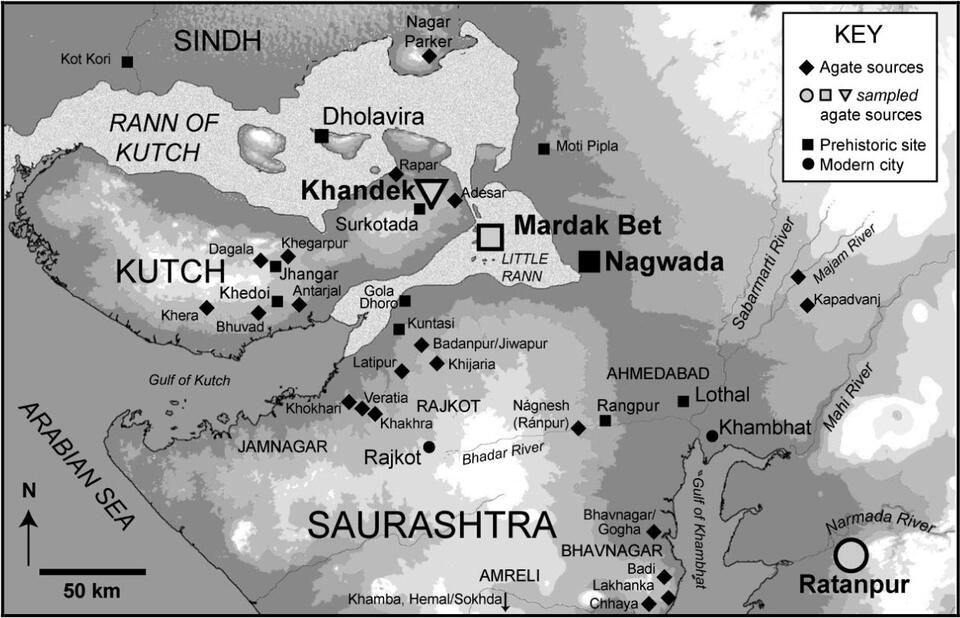"Geologically speaking," write the authors, "agate is not a particularly uncommon rock . . .. However, good agate – i.e, that which ancient lapidaries would have found suitable for beadmaking – is not widely available. Nodules of the size and quality required to make Harappan-style long-barrel carnelian beads are, in fact, extremely rare" (p. 177). Using Instrumental Neutron Activation Analysis (INAA) the authors track down the sources of ancient Indus agate, and exploring a suggestion made by Indian archaeologist Shereen Ratnagar, manage to locate the sources of most Indus agate in northern Gujarat instead of the better known later sources in Ratanpur. They were also able to make determinations around Thai and Iranian agate using INAA, and look at diamond drilling techniques and their evolution from Indus times.
In addition to these specific findings, the analysis shows how deploying modern investigative techniques, much like detectives to, it is possible to track down the sources of raw materials with great specificity and shed new light on interactions between people and places from ancient through modern times.
Image: Select agate sources and archaeological sites in Gujarat, India.

